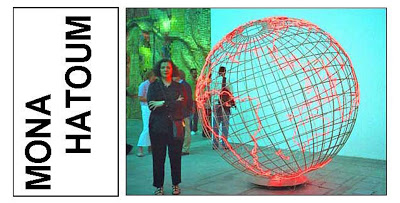
><!–[if !mso]>

st1\:*{behavior:url(#ieooui) } <![endif]–> <!– /* Style Definitions */ p.MsoNormal, li.MsoNormal, div.MsoNormal {mso-style-parent:””; margin:0cm; margin-bottom:.0001pt; mso-pagination:widow-orphan; font-size:12.0pt; font-family:”Times New Roman”; mso-fareast-font-family:”Times New Roman”;} @page Section1 {size:612.0pt 792.0pt; margin:72.0pt 90.0pt 72.0pt 90.0pt; mso-header-margin:36.0pt; mso-footer-margin:36.0pt; mso-paper-source:0;} div.Section1 {page:Section1;}
–>
Mona Hatoum was born in Beirut, Lebanon. During a visit to London in 1975, civil war broke out in Lebanon and she was forced into exile. She stayed in London, training at both the Byam Shaw School of Art and the Slade School of Fine Art (University College, London) between the years 1975 and 1981. In 1995 she was nominated for the Turner Prize for her exhibitions at the Centre Georges Pompidou in Paris, and for her show at the White Cube.
In the early 1980s Hatoum began her artistic career with performance pieces, though later she moved from ‘live’ work to more mechanical installations, involving video, light, and sound. While mostly focusing on confrontational themes such as violence, oppression, and voyeurism, she has often made powerful references to the vulnerability and resistance, of our human bodies.
In 1989 Hatoum exhibited her first major scuptural work ‘The Light At the End’ in the Showroom Gallery. The same piece was shown the following year in the British Art Show. Her Alive and Well was displayed in the Victoria Tunnel (a former air raid shelter under the streets of Newcastle-upon-Tyne) in 1990.
She was shortlisted for the Turner Prize in 1995. In 1997, one of Hatoum’s works which had been purchased by Charles Saatchi was included in the Sensation exhibition which toured London, Berlin and New York.
In 2000, her work The Entire World as a Foreign Land was at the inaugural launch of the Tate Britain. She had a work called Home at the Hudson Valley Center for Contemporary Art in 2004.
In 2008, she was awarded the prestigious Rolf Schock Prizes.

<!– /* Style Definitions */ p.MsoNormal, li.MsoNormal, div.MsoNormal {mso-style-parent:””; margin:0cm; margin-bottom:.0001pt; mso-pagination:widow-orphan; font-size:12.0pt; font-family:”Times New Roman”; mso-fareast-font-family:”Times New Roman”;} @page Section1 {size:612.0pt 792.0pt; margin:72.0pt 90.0pt 72.0pt 90.0pt; mso-header-margin:36.0pt; mso-footer-margin:36.0pt; mso-paper-source:0;} div.Section1 {page:Section1;}
–>«Measures of Distance»
<!– /* Style Definitions */ p.MsoNormal, li.MsoNormal, div.MsoNormal {mso-style-parent:””; margin:0cm; margin-bottom:.0001pt; mso-pagination:widow-orphan; font-size:12.0pt; font-family:”Times New Roman”; mso-fareast-font-family:”Times New Roman”;} @page Section1 {size:612.0pt 792.0pt; margin:72.0pt 90.0pt 72.0pt 90.0pt; mso-header-margin:36.0pt; mso-footer-margin:36.0pt; mso-paper-source:0;} div.Section1 {page:Section1;} –>
This videotape is perhaps the most touching of Mona Hatoum’s artistic statement in which she examines her position as an exiled female artist. The author’s voice translates letters of her mother from Arab into English, represented visually as a texture of calligraphy over the texture of her body and skin. Measuring a multitude of distances/oppositions or differences between home and exile, writing and reading, reading and translating, mother and daughter, autobiography and artistic invention.
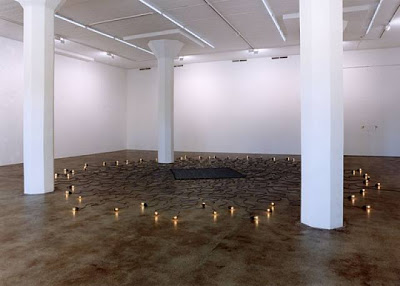

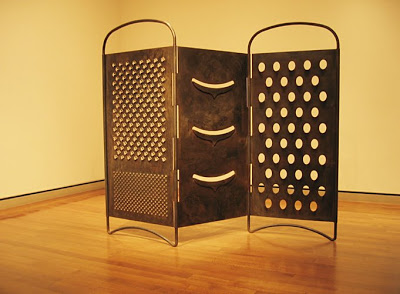




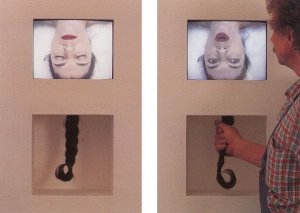

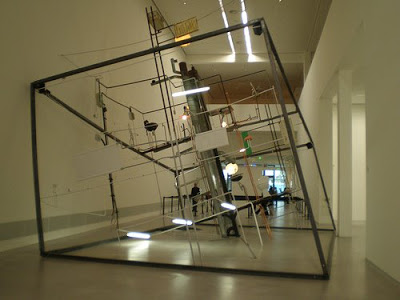
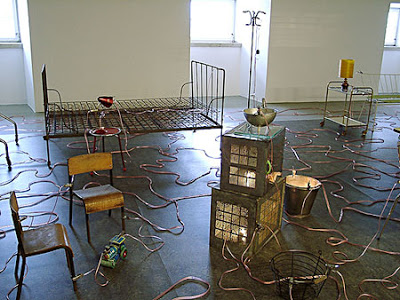
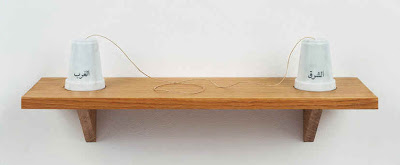
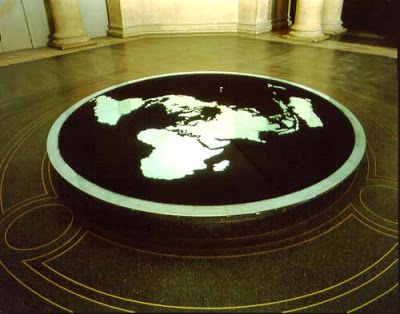





 ><!–[if !mso]>
><!–[if !mso]> st1\:*{behavior:url(#ieooui) } <![endif]–> <!– /* Style Definitions */ p.MsoNormal, li.MsoNormal, div.MsoNormal {mso-style-parent:””; margin:0cm; margin-bottom:.0001pt; mso-pagination:widow-orphan; font-size:12.0pt; font-family:”Times New Roman”; mso-fareast-font-family:”Times New Roman”;} @page Section1 {size:612.0pt 792.0pt; margin:72.0pt 90.0pt 72.0pt 90.0pt; mso-header-margin:36.0pt; mso-footer-margin:36.0pt; mso-paper-source:0;} div.Section1 {page:Section1;}
st1\:*{behavior:url(#ieooui) } <![endif]–> <!– /* Style Definitions */ p.MsoNormal, li.MsoNormal, div.MsoNormal {mso-style-parent:””; margin:0cm; margin-bottom:.0001pt; mso-pagination:widow-orphan; font-size:12.0pt; font-family:”Times New Roman”; mso-fareast-font-family:”Times New Roman”;} @page Section1 {size:612.0pt 792.0pt; margin:72.0pt 90.0pt 72.0pt 90.0pt; mso-header-margin:36.0pt; mso-footer-margin:36.0pt; mso-paper-source:0;} div.Section1 {page:Section1;}


















